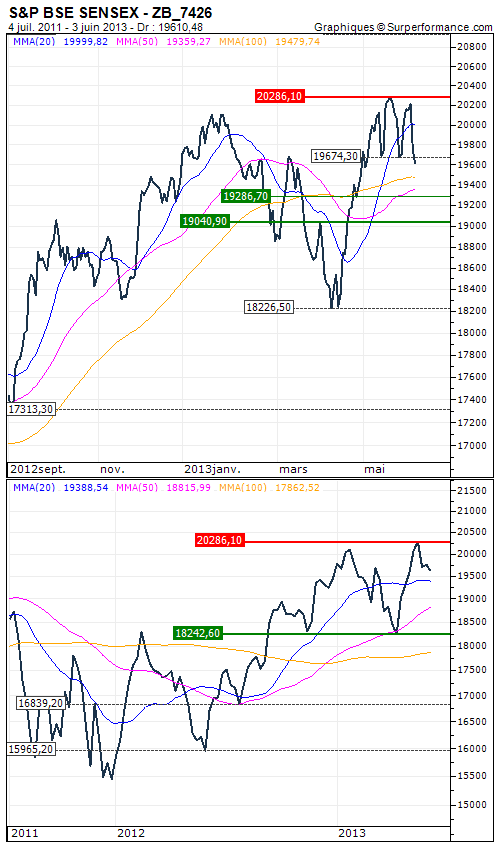SENSEX BSE30 : Deterioration of the economic environment
By Rodolphe Steffan
The pace of India not ceases to slow, as shown by figures released last week; the GDP has increased by only 5%, the worst level recorded in ten years. This level is lower than the one anticipated by the central bank, which had already cut its forecasts from 6.5 to 5.8% level. Meanwhile, inflation is expected to increase with a forecast of 6.5% for the year-end that would make the outlook gloomier. In this climate of uncertainty, the central bank has a very limited action's margin to take any monetary measures, which are currently needed.
In addition, the potential growth of the country continues to be alarmingly disabled by recurrent power cuts that prevent the proper functioning of the production lines. A note published by HSBC in April said that those power cuts have led to a sharp decline in manufacturing, which moves at its slowest pace in four years.
The rating agency Standard & Poor's warned it might have to degrade the sovereign rating of India in the year, partly due to the government's inability to overcome the current energy challenges. It must, in fact, meet the needs of a growing population, especially the middle class which might be the only one able to positively impact the country's growth in the long term.
Technically, the trend turns down and the index could quickly validate the formation of a double top pattern near the strong resistance area at 20,000/20,250 points. Given the current climate of economic uncertainty, we decided to take a short position on the 19,750 points with the 19,050 or even the 18,250 points in line of sight.


 SENSEX BSE30
SENSEX BSE30 







